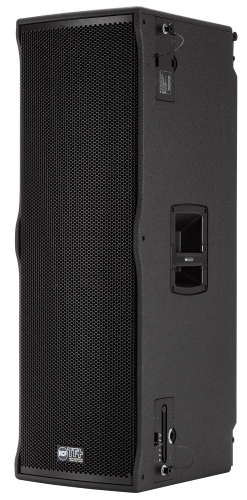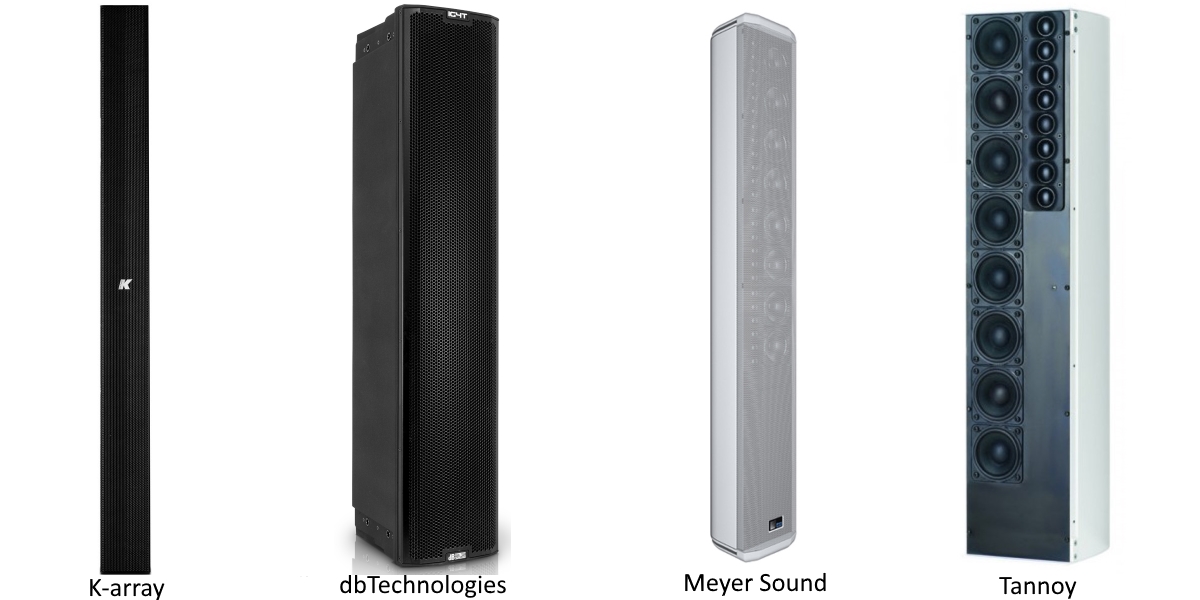
The K-array KP102 is outfitted with twelve 3.15-inch transducers housed in a very narrow stainless steel chassis. The close spacing of the transducers further enhances phase coherence and focus while lowering distortion. The vertical dispersion pattern can be switched for wide or narrow coverage to better meet the specific needs of a variety of applications.
At the same time, the drivers act as direct radiators in the horizontal plane, giving the system a stated 140 degrees of horizontal coverage. The internal passive crossover/filter network uses asymmetrical slopes to integrate the subsystems.
Several rigging accessories provide linking and hanging options as well as combining with the smaller KP52 in vertical and horizontal configurations.
For easier integration with other loudspeakers and/or amplifiers, the KP102 also has user-selectable impedance of either 16 or 4 ohms. At 16 ohms, as many as four KP102s can be driven by a single amplifier at 4 ohms (up to two units at 8 ohms).
It can be integrated with several models of K-array powered subs (KMT12, KMT18, KMT21, KMT218) and configured with specific presets. In addition, the K-array KA amplifier series has pre-sets optimized for the KP102.
The recently introduced INGENIA Series from dBTechnologies includes four models. The largest, the IG4 T, is equipped with four 6.5-inch cone drivers and a 1.4-inch compression driver. All models of the series are designed to work individually, and they can also be coupled by turning one loudspeaker upside down and placing it upon the other.
Via infrared technology, the presence of the second loudspeaker is detected and an onboard-configuration wizard automatically sets up the system to optimize coverage and acoustic coherence.
INGENIA’s horn design is horizontally symmetric and vertically asymmetric, meaning that horizontal dispersion is wide while vertical dispersion is narrow in the upper part and wider in the lower part. Further coverage tailoring can be attained with digital steering. User control is via an OLED display.
The Meyer Sound CAL Series of self-powered (class D) steerable column loudspeakers includes three models incorporating DSP from the company’s D-Mitri digital audio platform. Each driver in a CAL module is powered by a dedicated amplifier channel to accurately control vertical behavior. The vertical beam can be angled up or down 30 degrees and can be configured with beam widths from 5 to 60 degrees.
The QFlex Series from Tannoy is comprised of four basic modules (8-channel master/slave and 16-channel master/slave), all with advanced algorithms and dense physical spacing of transducers. They’re the foundation for a wide range of configurations, ranging all the way up to a 64-channel array. Beam steering control is +/- 70 degrees to match the needs of a range of applications.
Modules incorporate DSP utilizing the latest generation of SHARC processors, V-Net network control, and class D multi-channel amplification. Further, users can switch between two preset steering configurations for variable or multi-purpose spaces. QFlex is networkable with other Tannoy V-Net products, and the BeamEngine GUI, integrated with EASE Focus v2, provides accurate modeling of arrays. QFlex receives/transports digital audio via AES3 stream, and networking is also available via a Dante bridge.

